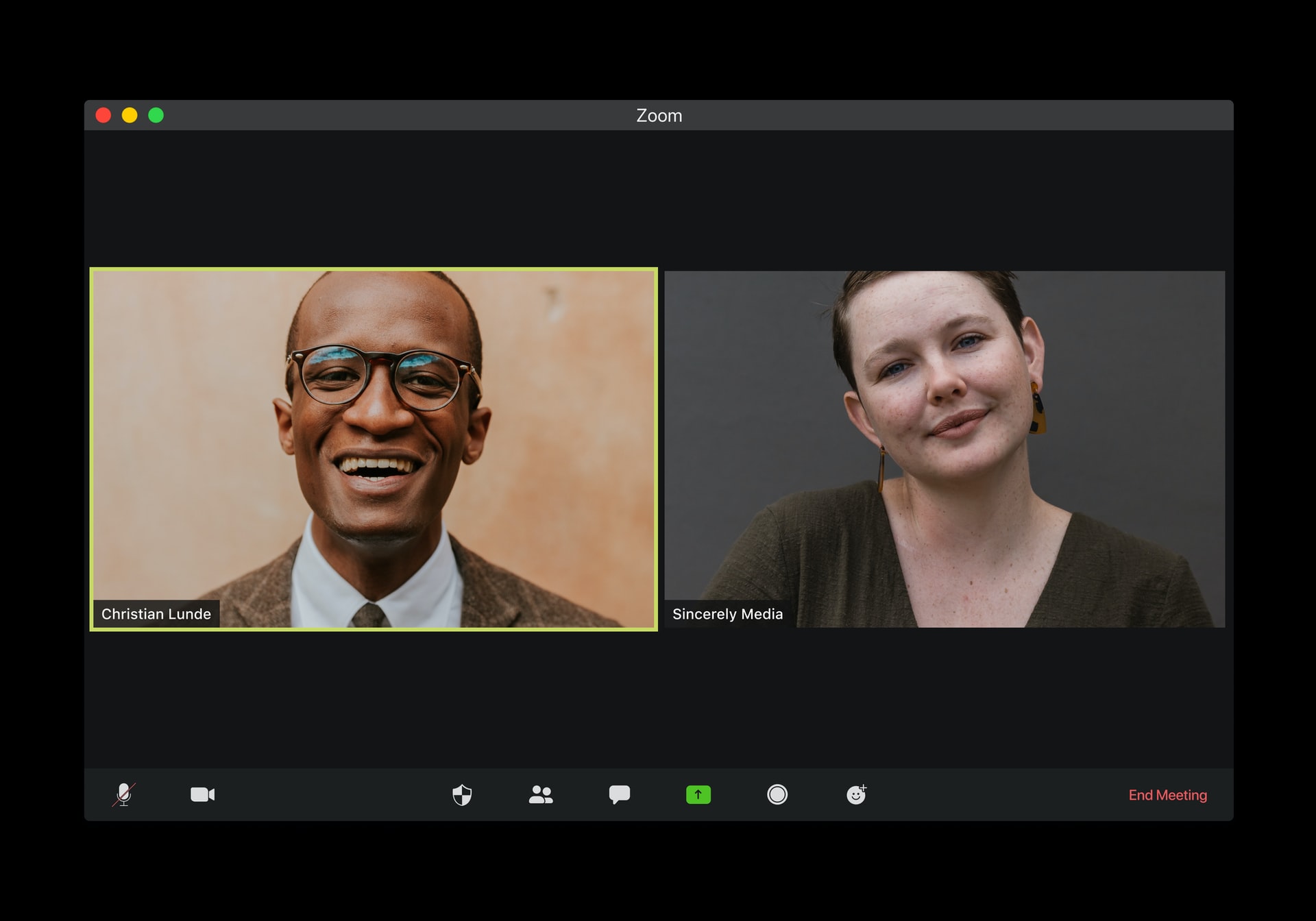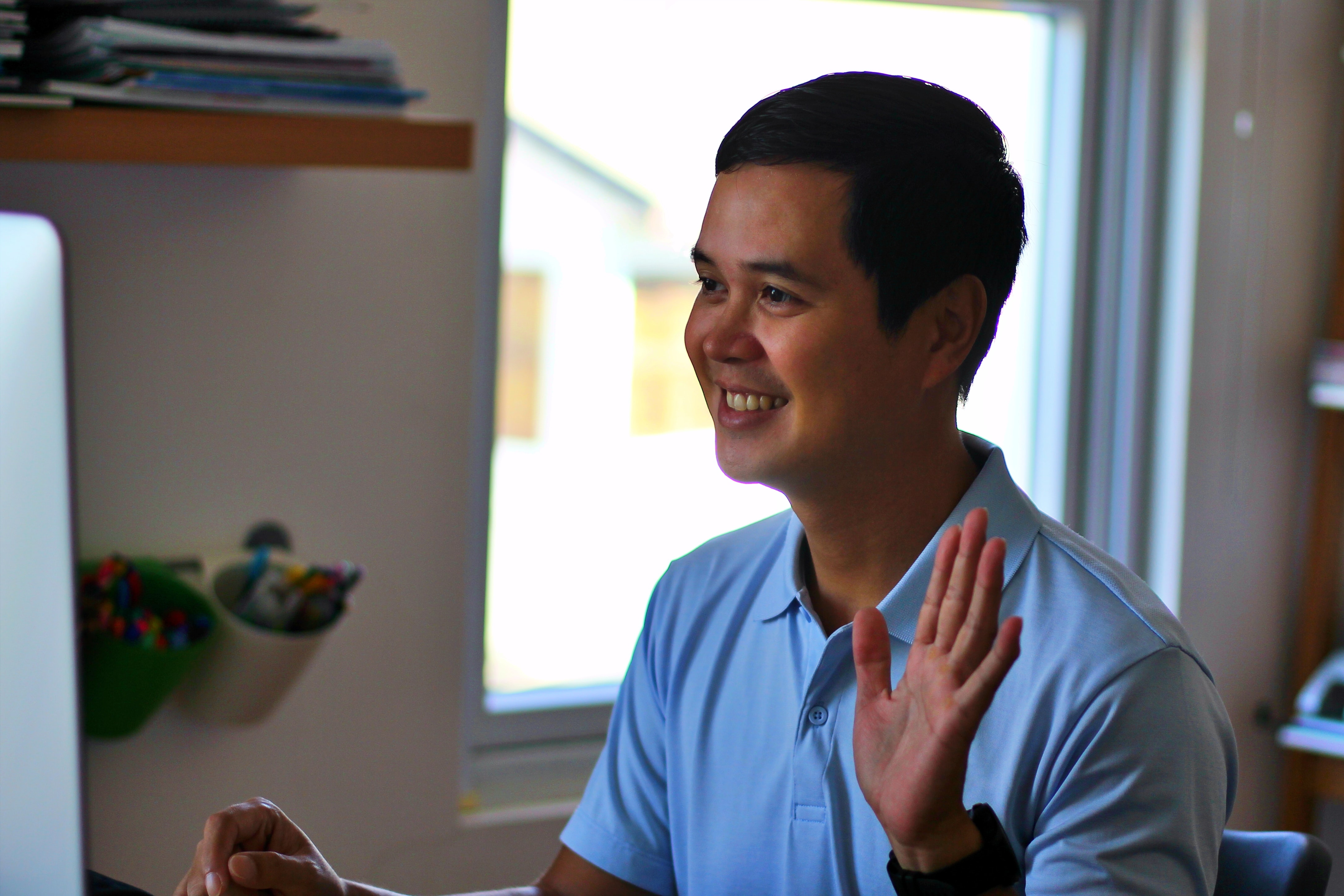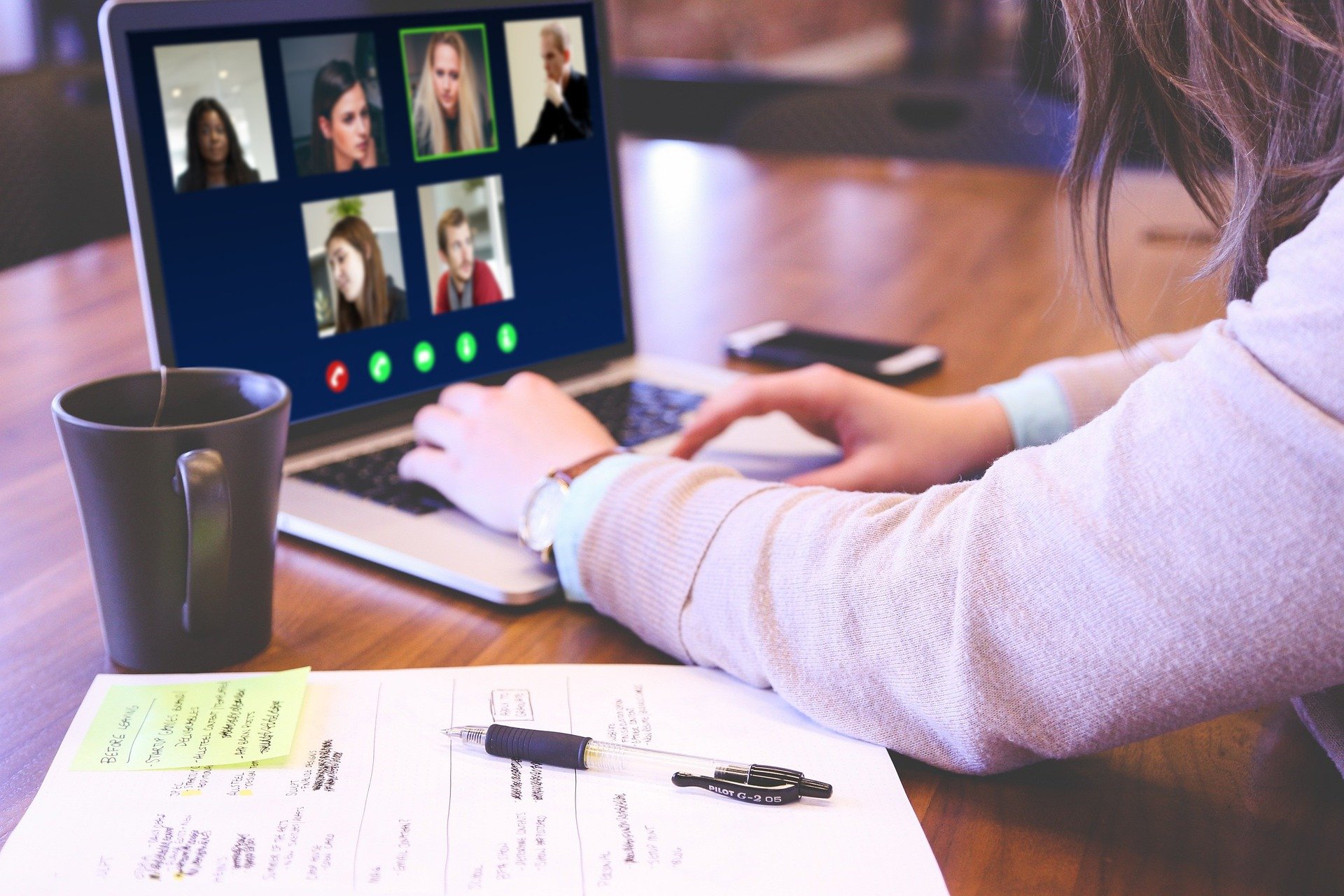Co-authored with Heather Neely, MA
Imagine this. Eight scientists, all senior leaders in biotech, are leaning into their computer screens, taking in the familiar faces of their coworkers within their Brady Bunch style Zoom boxes. They spend one full minute looking at one another, with no other agenda except to see. Given the circumstances of 2020, maybe it wasn’t even the weirdest thing they’ve done this year, but certainly it is not standard fare for team meetings. Regardless, they unanimously reported how good it felt to stare at each other for 60 seconds. “What was that like?” we asked. They replied, “Calm.” “Peaceful.” “I was reminded of how much history we have together.” “It just felt good.”
This was part of a recent workshop we called “Virtual Presence.” The goal of the workshop was to address a growing concern that– even though productivity in its strictest sense remains high– working remotely is producing a gradual degradation in the ability of the leadership team to coordinate and execute on their larger, more complex initiatives. The exercise revealed something simple, but not obvious. These leaders are thirsty for a certain kind of being in each other’s presence, and they can create a feeling over video that comes close to quenching that thirst.
The Monochrome Malaise
“Every day feels like the same old, same old.” “There’s no diversity or spectrum of my day.” “It’s a monotonous grey.” One senior leader told us about a recent conversation with her co-founder. While usually their differences create a robust discussion, she explained in this instance, “I was alarmed by how quickly I backed down. That’s not me.” While this lack of vitality is not universal, for some people and in some situations, the lack of freshness and new stimulation, is deeply dissatisfying. Without the refresh of novel and varied experiences, work can easily become transactional.

The field of interpersonal neurobiology (largely credited to and written about by Dan Siegel, MD) can teach us a lot about the “operating system” that is running in the background of our day to day navigation as human beings, and what exactly is impacted as many navigate a virtual workplace. Reduced to its simplest terms, our well-being as humans rests on what is happening in our minds, our brains, and our relationships. This is referred to as the “triangle of well-being”. Our brain is wired with “resonance circuitry”, including mirror neuron systems, which are the root of empathy and connection in relationships. Zoom fatigue is real because over video we have to compensate for the social cues our operating system is lacking. The inputs to our resonance circuits are diminished, so we have to work extra hard to understand one another. As one leader said, “I have to be on point and focused all day long; it’s exhausting.” But beyond Zoom fatigue lies a deeper and more concerning loss of vitality. As leaders persist in navigating, pivoting, and redesigning, the overall sense of realness and satisfaction in their work is in jeopardy.
The current recommendations for creating virtual presence and connection on remote teams focus on some critical factors such as use of technology, leadership style, culture and policies that are attuned, empathic and supportive of the humanity of the workforce. We are hearing a lot about the importance of returning to mission/ vision/ values, over-communication, inclusive policies, and how to run better online meetings (don’t forget to use the chat feature!). What is missing from the conversation are some operating instructions for virtual connection that place presence at the center, and thus address a deeper need than remaining “productive” or even “engaged”.
What is missing from the conversation are some operating instructions for virtual connection that place presence at the center, and thus address a deeper need than remaining “productive” or even “engaged”.
Why presence? And what is it anyway?
Presence is the ability to be with our bodies, emotions and thoughts, and those of the people around us. It is a felt sense of noticing one’s current experience. Why does it feel good to spend one full minute staring at other people’s faces on our computer screens? We propose it is because this activity reminds our brains of the relationships we have with these people, which resonates at a deeper level than just executing on the work at hand. When we do this, we are solving for more than efficiency. We are taking care of our satisfaction, making room for creativity and cultivating engagement and vitality. This makes for more enduring and trustworthy commitments, which produces consistently better results.

A team, when functioning well, is powerful beyond measure and can deliver on huge promises. We believe greater presence is required in the ongoing remote work reality, in order to head off the potential for bigger breakdowns as social capital degrades over time. When we cultivate presence, we increase engagement, produce more trustworthy commitments, drive better results, and ultimately achieve better outcomes. But how exactly do we cultivate presence as we update, onboard, brainstorm, give feedback, trouble shoot, problem solve, and set strategy?
Consider the task and the team
Not all tasks, projects and meetings require the same amount of presence. Working from home is undeniably more efficient for certain types of work. Other types will benefit from being done in person, whenever possible. Similarly, there are no “one size fits all” solutions for engagement. Team health varies from team to team and time to time. Some teams have the benefit of a long history and a multitude of micro-connections that have built trust over time. Other teams have multiple new members who have never occupied the same room.
Nevertheless, some general considerations deserve mention and reflection for how they may impact your teams. You can invite your team to brainstorm new WFH team agreements that will support team focus and engagement. First, we will offer some ideas for antidotes to the slide into “transaction mode”. Then we will address cultivating presence in more direct ways.
Antidotes to Transaction
Presence and engagement can be promoted indirectly by bringing awareness to and supporting your bodies, minds and emotional states. In general, we recommend that you do not try to replicate what was happening in the past. Instead, reinvent based on what elements are working now and what else you need to carry forward.

Create variation in meetings
- Decide in which meetings require people have video on and which meetings do not require video. In advance of meetings, let people know what your expectation is, so they can be prepared. For some people, switching between “old fashioned” phone calls interspersed with video calls is a powerful way to keep things fresh.
- How long do your meetings need to be? How do you know? Mix it up and challenge your thinking about the duration of your meetings. The default for many traditional face-to-face meetings was 50 minutes. That was then, this is now. What is needed now?
- Don’t book back-to-back meetings. Studies in the field of high-performance show that the human brain needs a reset every 60-90 minutes in order to stay fresh. One of the challenges in WFH is that many of us are simply not getting those “brain breaks.” Meetings in the workplace had some natural unscheduled built in “context shifts” – and these unassuming breaks and hallway chats did wonders for our focus and overall mental health.
Optimize for in-meeting participation
By building in systems for active participation in meetings, people will be more committed to the decisions that are made. Here are a few ideas to consider:
- Use the breakout feature in your video meetings. When you want other ‘voices in the room’, send people into breakout rooms to have smaller group conversations. This forces participation. Ask each breakout room to answer a series of questions. Have them come back to the large group and report their findings/ ideas/ answers/ challenges.
- Try the “Hands Method” for fostering active participation. When decisions are being made, each team member indicates their commitments with the following signals. Two hands is “I agree; I’m all in.” One hand is “I have a question or concern.” No hands signals “Huh? Did someone ask a question?”, highlighting the need to actively seek that person’s fuller participation.
- Assign someone in the group the role of “commitment checker.” Make it this person’s job to pay attention to who is participating and invite this person’s observations when decisions are being made. Rotate who takes on this job by meeting, day or week.
Give yourself and others planned breaks
These can be daily, weekly, and perhaps a bigger one monthly. Screen time is draining– you need to step away. Decide on an afternoon or two during the week when meetings are not scheduled. This can be time to get work done uninterrupted, or step away and attend to other needs (childcare, a workout).

Breathe, Stretch, Move
Do these things outside of meetings, but consider doing them during meetings as well. A collective deep breath to sync up at the beginning of a meeting, or to break some tension on a certain topic, can go a long way. These authors have been known to take walks, do yoga stretches, or even some bicep curls when on our calls together.
In these unprecedented times, it’s important to think outside the box and give yourself and others creative license, and even “permission,” to do things differently. Be human and model being human to others by saying things like, “I am going to take our meeting today as a ‘walk and talk’ because I want to be fully present with you and right now; moving is what I need!”
Schedule regular 1:1 check-ins
Even if there is not an obvious agenda, this allows a space where stuff will spontaneously “come up”.
Prioritize seeing faces over slides
Set aside the slides and look at one another instead. Or at least make sure your face is somewhere on the screen as you present. Toggle between faces and slides to keep things alive.
Set aside non-transactional team time
Even over video, play a game or just catch up. Take a moment to remember that you are working with funny, interesting, vulnerable humans.
From Transaction to Vitality

Despite the most thoughtful, well-designed and inclusive day-to-day navigation, teams can find their energy waning. Sometimes we can call forth greater presence by addressing the drift to transaction and the need for vitality in a more general way. We call these resets, or pep talks. Other times what stands between you and a more vital, engaged and committed meeting is a potentially difficult conversation, either with an unfocused person, or the group. We’d like to remind you of the relevance for having these conversations, and empower you to have them skillfully.
We’ve all been in situations where it’s clear someone is not paying attention and it is hard to know how to handle it. They (or we) are looking at their phone (“Is this related to what we are talking about?”, we wonder) or off to the side on a video call (“Are they looking at a second screen?”). It is distressing to notice a lack of engagement and it is potentially distressing to speak up. We have a desire to disambiguate the situation (“Hey Jerome, are you with us?”) but that risks potential embarrassment or discomfort. In these moments, we are faced with multiple competing priorities. Do we raise the issue and call for presence, or opt for being polite and keeping ourselves and others comfortable? Moreover, if we are feeling depleted ourselves, ‘addressing the issue’ registers as one more thing on top of our already pressured agenda.
When you find yourself in this dilemma, you’ll want a solution that takes care of both things: achieving the objective at hand and facilitating the meeting with maximum engagement. When deciding between candor and ‘letting it slide’, it can be helpful to remind yourself of the bigger picture. Why are you here? What promises is your team on tap to deliver? This is your team’s care. Opting for distraction or politeness when big results are at stake serves no one. Instead, recall your team’s care to embolden you to invite others to rejoin you in the effort to achieve big outcomes.
Resets and Pep Talks
Consider having a reset conversation with your team to set the stage for new possibilities. Before you launch your next team meeting, name your concern, get curious about their experiences, or offer them some old fashioned inspiration! You know your team best, so pick a tone that you know will work for them.
“Hey team, I know we are here because we all care deeply about the outcomes of our work. It’s easy over video to get distracted and lose energy. As a fellow human being and as a leader, I am taking a stand for us to raise our game! I know with kindness and attention to our team we can do this in new ways!”
“COVID-19 has pushed us all to work in ways that are challenging. Working over video is not the same as being in person. Lately, I’m noticing it’s harder for me to give my undivided attention to video meeting after video meeting. I’m finding myself sliding into a less energized, more transactional way of operating. Is anyone else feeling something similar?”
“Getting distracted and losing focus, especially in the current circumstances, is human and normal. But, we can’t afford to pretend to be focused when we are not. There is too much at stake that we all care about. Let’s brainstorm ways to handle distractions to stay energized and well coordinated with each other. For starters, I am requesting a few adjustments to support our presence and focus in meetings.”
Difficult Conversations
Resets and pep talks will not eliminate distraction or disengagement and you may need some talking points on hand for those awkward moments when people check out. This kind of feedback can be delivered to a single person in a private one-on-one conversation or you can address it skillfully in a group setting. If addressed in a group, you’ll get the benefit of the rest of the members hearing it.
Address Distraction
Use “I” statements to address distraction or disengagement. For instance:
“Peter, I’m noticing that your camera is pointing to the side of your head and I find this distracting. Can you please adjust your camera so that I may see your face?”
“Kayla, I can hear a lot of background noise on your line and I find it difficult to focus and trust that you are hearing me. What can you do to address this so that we have a better connection?”
“Alex, I can’t tell if you are working on another monitor, or gazing away and still actively listening. Can you check in with us on that?”
“Connie, do you have a point of view on this?”
Disambiguate
Sometimes you need to check out something you are sensing but can’t quite put your finger on. Use “I” statements to clear up an ambiguous situation and invite others to weigh in to help diagnose what’s happening.
“I’m noticing that people are pretty quiet today. Are others noticing the same thing? Is there something we need to address?”
“Something feels off here, at least to me. Is anyone else sensing that? Can everyone name their own experience of our interactions/ of the meeting so far?”
Teach your team to name what is happening in the moment
When we name what is happening, it normalizes the situation and supports everyone in being focused. You can model it yourself by saying things like,
“I’m picking up my phone to check our meeting time for next week.”
“The doorbell may ring halfway through our call; I’ll be offline for just a minute to sign for a package.”
Or make a direct request such as,
“When we are on video calls and you get distracted (by dogs, children, texts) simply let others in the meeting know what is happening in the background. Use the chat feature if you are concerned about taking the conversation off track.”
Navigating the Future with Presence

The events of 2020 have taken us off the map, into new territory, with new reference points. Even with the arrival of a vaccine, we are entering a post-COVID “new normal”, and it remains unclear what the future will look like. Most certainly, remote work will remain a part of it.
What is clear is that leaders need permission to declare what they need in this new frontier. Moreover, leaders often need to respond intuitively to something before they even know what it is. To do so, it is critical to cultivate the presence of mind, and the courage, to declare what we don’t know and take action anyway. Cultivating presence means being alert, curious, creative and communicative. It means having candid conversations with your teams, sharing stories, experiences and perspectives. It means listening and being inclusive when brainstorming ideas for teaming in new ways. Whether coordination is taking place in-person or remotely, leaders who are tuned in to the health and vitality of their teams will have an advantage in our evolving future.
Co-authored with Heather Neely, MA


